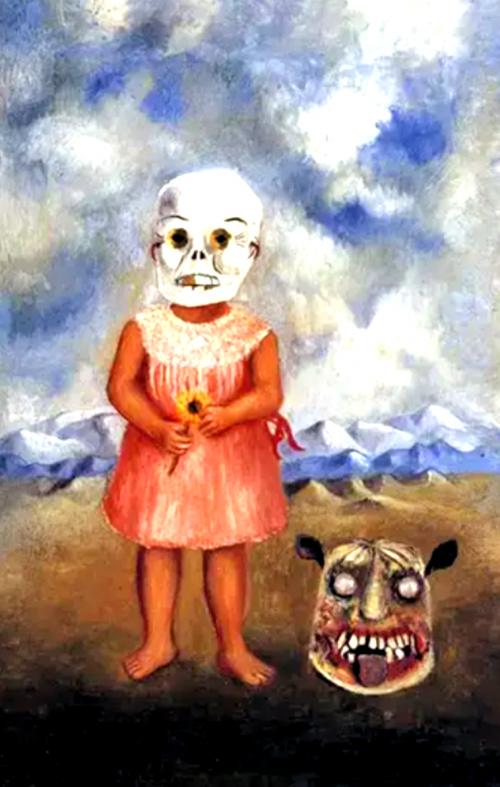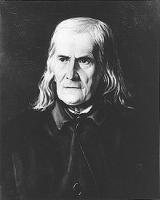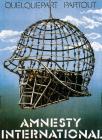Nun will die Sonn’ so hell aufgehn,
Als sei kein Unglück die Nacht geschehn!
Das Unglück geschah nur mir allein!
Die Sonne, sie scheinet allgemein!
Du mußt nicht die Nacht in dir verschränken,
Mußt sie ins ew’ge Licht versenken!
Ein Lämplein verlosch in meinem Zelt!
Heil sei dem Freudenlicht der Welt!
Als sei kein Unglück die Nacht geschehn!
Das Unglück geschah nur mir allein!
Die Sonne, sie scheinet allgemein!
Du mußt nicht die Nacht in dir verschränken,
Mußt sie ins ew’ge Licht versenken!
Ein Lämplein verlosch in meinem Zelt!
Heil sei dem Freudenlicht der Welt!
Contributed by Riccardo Gullotta - 2023/6/7 - 10:33
Language: English
English translation / Englische Übersetzung / Traduzione inglese / Traduction anglaise/ Englanninkielinen käännös:
Richard Stokes
Richard Stokes
NOW THE SUN PREPARES TO RISE AS BRIGHTLY
Now the sun prepares to rise as brightly,
As though no misfortune had befallen in the night!
The misfortune befell me alone!
The sun, it shines on all mankind!
You must not enclose the night within you,
You must immerse it in eternal light.
A little lamp went out in my firmament,
Hail to the joyful light of the world!
Now the sun prepares to rise as brightly,
As though no misfortune had befallen in the night!
The misfortune befell me alone!
The sun, it shines on all mankind!
You must not enclose the night within you,
You must immerse it in eternal light.
A little lamp went out in my firmament,
Hail to the joyful light of the world!
Contributed by Riccardo Gullotta - 2023/6/7 - 10:37
Language: Italian
Italienische Übersetzung / Traduzione italiana / Italian translation / Traduction italienne / Italiankielinen käännös:
Quirino Principe
Quirino Principe
ORA IL SOLE OSA SORGERE E SPLENDERE ANCORA
Ora il sole osa sorgere e splendere ancora,
come se una sciagura nella notte non fosse avvenuta.
La sciagura è avvenuta: certo, a me solo è toccata,
e il sole splende ovunque e per tutti gli altri, là fuori.
Non devi in te la notte rinchiudere, e nasconderla,
ma lasciarla affondare e perdersi nella luce eterna.
Si è spenta nella mia tenda una piccola lucerna,
ma sia gloria alla luce cara e gioiosa del mondo!
Ora il sole osa sorgere e splendere ancora,
come se una sciagura nella notte non fosse avvenuta.
La sciagura è avvenuta: certo, a me solo è toccata,
e il sole splende ovunque e per tutti gli altri, là fuori.
Non devi in te la notte rinchiudere, e nasconderla,
ma lasciarla affondare e perdersi nella luce eterna.
Si è spenta nella mia tenda una piccola lucerna,
ma sia gloria alla luce cara e gioiosa del mondo!
Contributed by Riccardo Gullotta - 2023/6/7 - 10:37
Language: French
Version française — MAINTENANT, CLAIR ET BEAU, LE SOLEIL VA SE LEVER — Marco Valdo M.I. — 2023
Chanson allemande — Nun will die Sonn’ so hell aufgeh’n — Friedrich Rückert — 1834
Poème : Friedrich Rückert
Musique : Gustav Mahler
Chants des Enfants Morts [1901-1904]
Album : Kindertotenlieder

Friedrich Rückert, poète romantique allemand du XIXᵉ siècle, a écrit Kindertotenlieder (Chants des Enfants Morts), un recueil de 428 poèmes, à la suite du décès prématuré de deux de ses enfants, victimes de la scarlatine. L’œuvre a été publiée à titre posthume en 1871. Gustav Mahler commence à composer cinq lieder sur cinq des poèmes de Rückert. Quatre ans plus tard, Mahler perd également sa fille Maria, âgée de quatre ans, qui meurt elle aussi de la scarlatine.
Et pourtant le soleil va se lever…
Chanson allemande — Nun will die Sonn’ so hell aufgeh’n — Friedrich Rückert — 1834
Poème : Friedrich Rückert
Musique : Gustav Mahler
Chants des Enfants Morts [1901-1904]
Album : Kindertotenlieder

L’ENFANT ET LA MORT
Frieda Kahlo — 1938
Frieda Kahlo — 1938
Friedrich Rückert, poète romantique allemand du XIXᵉ siècle, a écrit Kindertotenlieder (Chants des Enfants Morts), un recueil de 428 poèmes, à la suite du décès prématuré de deux de ses enfants, victimes de la scarlatine. L’œuvre a été publiée à titre posthume en 1871. Gustav Mahler commence à composer cinq lieder sur cinq des poèmes de Rückert. Quatre ans plus tard, Mahler perd également sa fille Maria, âgée de quatre ans, qui meurt elle aussi de la scarlatine.
Et pourtant le soleil va se lever…
MAINTENANT, CLAIR ET BEAU, LE SOLEIL VA SE LEVER
Maintenant, clair et beau, le soleil va se lever,
Comme si cette nuit, nul malheur n’était arrivé !
Moi seul, le malheur a frappé !
Le soleil, lui, brille sans s’inquiéter !
N’enferme pas la nuit en toi,
Dans la lumière éternelle, plonge-la !
Une petite lampe s’est éteinte furibonde !
Saluons la joyeuse lumière du monde !
Maintenant, clair et beau, le soleil va se lever,
Comme si cette nuit, nul malheur n’était arrivé !
Moi seul, le malheur a frappé !
Le soleil, lui, brille sans s’inquiéter !
N’enferme pas la nuit en toi,
Dans la lumière éternelle, plonge-la !
Une petite lampe s’est éteinte furibonde !
Saluons la joyeuse lumière du monde !
Contributed by Marco Valdo M.I. - 2023/6/8 - 18:44
×
![]()
Note for non-Italian users: Sorry, though the interface of this website is translated into English, most commentaries and biographies are in Italian and/or in other languages like French, German, Spanish, Russian etc.






Gedicht / Poesia / A Poem by / Poème / Runo :
Friedrich Rückert
Lieder / Musica / Music / Musique / Sävel:
Gustav Mahler
Kindertotenlieder / Canti per i bambini morti / Songs on the Death of Children / Chants sur la mort des enfants / Lauluja lasten kuolemasta [1901-1904]
Album: Kindertotenlieder
Ai bambini vittime delle guerre
Palestinesi , afghani, siriani , yemeniti, somali, nigeriani,sudanesi, congolesi,iracheni, birmani sono i bambini più colpiti. I casi accertati di morti e mutilazioni dal 2005 sono più di 104mila. Altre casistiche sinistre dei minori riguardano il reclutamento armato, le deportazioni, le violenze sessuali. Il Rapporto dell’Unicef ne da un resoconto.
L’articolo che segue è stato scritto da Yossi Klein Halevi, ebreo israeliano. Per l’intensità tagliente del suo messaggio e per le riflessioni che suscita merita di essere considerato tra le espressioni più memorabili del giornalismo internazionale. Per inciso é un' ulteriore conferma che in Israele le voci critiche e le persone di buona volontà riescono a farsi sentire.
di Yossi Klein su Haaretz, 11 Maggio 2023
Non c’è niente come l’uccisione di bambini per unire i cuori e le menti. Nelle ultime 18 settimane, gli israeliani si sono combattuti a vicenda, incapaci di trovare qualcosa che ci avvicinasse. Poi è arrivata l’uccisione dei bambini nella Striscia di Gaza e ha dimostrato che, dopo tutto, siamo fratelli.
Le barriere sono cadute e il malanimo è stato dimenticato. Yair Lapid [ leader del partito centrista Yesh Atid/ C’è un futuro, all’opposizione, n.d.C.] ha appoggiato un braccio consolatorio sulla spalla di Benjamin Netanyahu, mentre Benny Gantz [ leader della coalizione centrista HaMaḥane HaMamlakhti / Campo di Stato, all’opposizione, n.d.C.] ha appoggiato la testa su May Golan [donna parlamentare israeliana militante del Likud, n.d.C.] , ed è stato sorprendente che l’intera Knesset non si sia alzata in piedi e non abbia spontaneamente cantato “Hatikvah” [“Speranza”, inno nazionale israeliano, n.d.C.].
Bisogna ammetterlo. Uccidere bambini è il più atroce dei crimini. Non c’è crimine più spregevole. In questo risiede la sua spregevolezza e il suo potere. Agisce come deterrente, è efficace e fa scorrere sangue fresco e nuovo nelle nostre arterie. Se qualcuno aveva qualche dubbio sul fatto che l’aeronautica militare sia forte e minacciosa, l’uccisione dei bambini ha dimostrato che è troppo presto per tesserne l’elogio. È forte, è terrificante e si confronta con un esercito di circa 30.000 soldati che non ha i mezzi per i combattimenti aerei. L’aviazione vince sempre, se non per ko, ai punti – e se non ai punti, con l’aiuto degli opinionisti in naftalina della TV. L’uccisione di bambini e il bombardamento di civili sono più deterrenti ed efficaci di qualsiasi “banca degli obiettivi”, del famigerato “crollo” di edifici o di qualsiasi tentativo di “sradicare le basi del terrorismo una volta per tutte”.
L’uccisione dei bambini è pensata per provocare dolore, per colpire il punto più sensibile di tutti. Non è progettato per fermare il terrorismo; è progettato per scoraggiare i terroristi e renderci felici. Quando Itamar Ben-Gvir [ministro per la Sicurezza nazionale, leader della destra suprematista Otzma Yehudit / Potere Ebraico, n.d.C.] parla di “un colpo doloroso”, immagino che si riferisca proprio a questo. In effetti, dovrebbe cambiare il suo slogan elettorale: non “50 terroristi morti per ogni missile”, ma piuttosto “50 bambini morti per ogni missile”.
Qualcosa in una dichiarazione del genere solleverebbe la gente e infonderebbe fiducia, anche se tutti sanno che dopo un adeguato periodo di riposo, un aumento dei sondaggi di opinione e la fine della testimonianza del testimone del processo Netanyahu, Ari Harow [ex-capo di stato maggiore del premier Netanyahu, teste nel processo per corruzione Netanyahu, in corso, n.d.C.] saremo pronti per la prossima operazione.
Uccidere bambini è un’azione efficace che si scolpisce nella memoria. Chi ricorda i terroristi che abbiamo ucciso, quelli che sono stati il motivo per cui Ben-Gvir ha deciso di intraprendere questa operazione? Ne abbiamo uccisi due? Ne arriveranno quattro a sostituirli. Dopo tutto, ci siamo già passati.
Ma le immagini di Ali Ezz el-Din, 8 anni, e di sua sorella Mayar, 12 anni, sono impossibili da dimenticare. Somigliano troppo ai nostri figli – dopo tutto, tutti conoscono un bambino di un’età simile – e il pensiero che lo abbiamo ucciso non dovrebbe darci pace. Questi pensieri continueranno sempre a perseguitarci.
Queste immagini non sono il risultato di un piccolo passo falso. Non è come se un pilota arrivasse, salisse su un aereo, uccidesse un numero qualsiasi di esseri umani senza nome e senza volto e tornasse per il pranzo. Qui, con i bambini morti di Gaza, queste sono immagini che lo perseguiteranno per tutta la vita e appariranno nei suoi incubi. Sono sicuro che nel corso di addestramento dei piloti preparano i cadetti a una situazione del genere – un caso in cui la loro coscienza personale è in contraddizione con il loro dovere professionale.
Sono sicuro che i nostri coraggiosi piloti – quelli che si oppongono alla revisione giudiziaria e che preservano la democrazia, quelli che rischiano la vita giorno e notte per salvaguardare la nostra sicurezza e il nostro benessere – sono stati scelti anche in base alla loro resilienza emotiva e alla loro capacità di affrontare il terribile senso di colpa che comporta l’uccisione di bambini innocenti. È anche possibile che a loro non sia permesso di vedere la distruzione che hanno portato sulle famiglie, compresi i bambini. È possibile che, proprio come un plotone di esecuzione, condividano la colpa tra loro, per evitare che ricada su uno solo di loro.
L’uccisione dei bambini non ha solo lo scopo di scoraggiare i terroristi. Quando i ministri di questo governo hanno parlato di colpo doloroso, si riferivano a noi. Ci hanno fatto capire che non sono dei disfattisti senza spina dorsale e senza potere, come il governo precedente. Ci sono sicuramente riusciti. Ci hanno colpito dritto in mezzo agli occhi. Le foto dei bambini sono scioccanti e inquietanti.
Forse dovremmo chiedere a Facebook di vietare la pubblicazione di queste immagini, che ci sconvolgono così tanto e che distolgono l’attenzione dalla brillante operazione dell’aeronautica da questioni meschine come quelle di cui abbiamo appena parlato.
Dopo tutto, i 500 bambini uccisi nell’estate del 2014 non hanno fatto cadere nessuna coalizione. Inoltre, non si può certo considerare che i bambini morti siano “bambini”: dopo tutto, i “bambini” sono i nostri soldati che li uccidono. [ trad. italiana: Globalist]
by Yossi Klein, Haaretz, May 11, 2023
There’s nothing like killing children for bringing together hearts and minds. For the past 18 weeks, Israelis have been fighting each
There’s nothing like killing children for bringing together hearts and minds. For the past 18 weeks, Israelis have been fighting each other, unable to find anything to bring us closer together. Then came the killing of the children in the Gaza Strip and proved that we’re brothers, after all.
Barriers fell, and ill will was forgotten. Yair Lapid placed a consoling arm on Benjamin Netanyahu’s shoulder, while Benny Gantz leaned his head against May Golan, and it was surprising that the entire Knesset didn’t stand up and spontaneously break out to sing “Hatikva.”
It must be admitted. Killing children is the most heinous of crimes. There is no crime that is more contemptible. In that lies its despicableness and its power. It acts as a deterrent, it’s effective, and streams fresh, new blood to flow into our arteries.
If anyone had any doubt that the air force is strong and threatening, the childrens’ killing went and proved that it’s too early to say any eulogies for it. It’s strong, it’s terrifying, and it’s confronting an army of about 30,000 soldiers who lack the means for aerial combat.
The air force always wins, if not by a knockout then with points – and if not with points, then with the help of the mothballed pundits on TV. The killing of children and the bombing of civilians are of greater deterrence and effectiveness than any “target bank,” the infamous “collapsing” of buildings, or any attempt to “eradicate the foundations of terrorism once and for all.”
Killing children is designed to cause pain, to strike the most sensitive place of all. It isn’t designed to stop terrorism; it’s designed to deter the terrorists and make us happy. When Itamar Ben-Gvir talks about “a painful blow,” I imagine that he’s referring precisely to that. In fact, he should change his election slogan – not “50 dead terrorists for every missile,” but rather “50 dead children for every missile.”
Something about such a statement from him would uplift people and instill confidence, although everyone knows that after a proper rest period, a rise in the opinion polls and the end of Netanyahu trial witness Ari Harow’s testimony, we’ll be prepared for the next operation.
Killing children is an effective action that becomes carved into memory. Who remembers the terrorists we killed, those who were the reason why Ben-Gvir decided to embark on this operation? We killed two? Four will come to replace them. After all, we’ve been here before.
But the pictures of 8-year-old Ali Izzeldeen and his 12-year-old sister, Miar, are impossible to forget. They look too similar to our own children – after all, everyone knows a child of a similar age – and the thought that we killed him should give us no rest. These thoughts will always continue to haunt us.
These pictures are not the result of just a minor misstep. It’s not like a pilot arrives, boards a plane, kills whatever number of nameless, faceless human beings, and returns for lunch. Here, with the dead children from Gaza, these are pictures that will haunt him all his life and appear in his nightmares. I’m sure that in the pilots’ training course they prepare cadets for such a situation – a case in which their personal conscience stands in contradiction with their professional duty.
I’m sure that our brave pilots – those who oppose the judicial overhaul and who are preserving democracy, those who risk their lives day and night to safeguard our security and welfare – were also chosen based on their emotional resilience and their ability to deal with the terrible guilt involved in killing innocent children. It’s also possible that they aren’t allowed to see the destruction that they have brought down on families, including children. It’s possible that just like a firing squad executing someone, they also share the guilt among themselves, to ensure that it doesn’t fall on only one of them.
The killing of children is not only aimed at deterring terrorists. When the ministers in this government spoke about the painful blow, they were referring to us. They let us know that they aren’t spineless, powerless defeatists, like the previous government. They certainly succeeded. They hit us right between the eyes. The pictures of the children are shocking and disturbing.
Perhaps we should just demand that Facebook forbid the publication of such pictures, which we find so upsetting and which divert attention from the air force’s brilliant operation to such petty matters as we’ve just discussed.
After all, the 500 children who were killed in the summer of 2014 didn’t bring down any coalition. And besides, you can hardly consider the dead children to be “children” – after all, the “children” are our soldiers who kill them.
Analisi del brano
Friedrich Rückert, poeta tedesco romantico del XIX secolo, scrisse Kindertotenlieder, una raccolta di 428 poesie, in seguito alla scomparsa prematura di due dei suoi figli per scarlattina. L’opera fu pubblicata postuma nel 1871. Mahler iniziò la composizione di cinque lieder su cinque delle poesie di Rückert.Quattro anni dopo anche Mahler perse la figlia Maria di quattro anni , morta anch’essa di scarlattina.
Si riporta di seguito il saggio integrale di Adele Boghetich sul lieder proposto. Lo riteniamo un’ espressione di alto livello, capace di restituire attraverso l’analisi dell’opera il pathos che Mahler ha voluto trasfondere e una riflessione sugli orrori della guerra, dura e incomprensibile realtà umana.
Nel 1834, dopo la prematura morte dei figlioli Luise ed Ernst, il poeta Friedrich Rückert (1788-1866) componeva la raccolta degli oltre quattrocento Kindertodtenlieder [Canti per i bambini morti] , che sarebbe stata pubblicata postuma nel 1872 in ridotta scelta editoriale. Sono liriche dalla delicata scrittura poetica, elegiache meditazioni interiori espresse in stile tenero e ricercato: il poeta scruta in silenzio il mondo esterno in attimi di intensa riflessione, che lasciano velatamente trasparire i temi dell’amore, del dolore, del destino, della morte. Poesia allusiva, dunque, e non descrittiva, di un lirismo tristemente contemplativo: un gioco di “detto” e “non detto” dai significati simbolici, che rimandano a sensazioni sospese, come immagini gettate sulla tela di un pittore impressionista. Vi agiscono due motivi: quello naturale, modellato sul ritmo dello scorrere del tempo, e quello familiare, cantato attraverso il luctus del ricordo per offrire nuovi significati alla morte, a quel segreto portale verso l’infinito che governa il cammino dell’esistenza umana. A quella serena, trascendente Ruhe, visione salvifica di pace riconquistata, di catarsi dello spirito in sympathia con lo spirito della Natura, che molto risente delle antiche culture orientali.
Dopo la composizione degli estatici Rückert–Lieder, nel 1902 Gustav Mahler si accosta ai Kindertodtenlieder di Rückert cogliendovi nuovi percorsi di uno straordinario dilaniato “sentire”, che presto lo condurrà alle irte frontiere della Sesta Sinfonia . Percependovi l’armonia segreta del canto della Morte nella prospettiva metafisica di un mondo “oltre confine”, il musicista riunisce cinque liriche scelte in un ciclo unitario dal climax sinfonico-vocale graduato tra dolore, ricordo, visione, speranza, rivelazione.
Cinque sofferti momenti, dalla straordinaria forza comunicativa che, dopo il successo della prima esecuzione viennese del 29 gennaio 1905, sarebbero rimaste tra le opere predilette, e più eseguite, di Mahler.
Lento e malinconico , in rarefatta scrittura che dà voce ai colori notturni, il primo Lied si plasma lentamente nella lamentosa melopea dell’oboe e nella pallida alba dei primi dolenti versi del canto
Nun will die Sonn’ so hell aufgeh’n
als sei kein Unglück die Nacht gescheh’n!
[Ancora vuol sorgere luminoso il sole, come se nessuna sventura fosse accaduta nella notte!]
disciolti in un diafano Re minore e poi richiamati nell’eco di corni e clarinetti tra i tocchi cristallini del Glockenspiel, allegoria di voci infantili ormai recise alla vita.
Senza espressione riemergono oboe e corno, solitari sulla trama oscura della pagina, per contornare il luctus del terzo verso:
Das Unglück geschah nur mir allein!
[Una disgrazia per me c’è stata, per me solo!]
e avviare il volo del canto nel simulacro di un Sole che sembra voler risplendere allgemein , per tutti, ovunque, per sempre:
Die Sonne, die Sonne, sie scheinet allgemein!
Una luce che andrà rifrangendosi opaca in suoni franti e commossi, in immagini irreali come ideogrammi funebri, per poi spegnersi in pianissimo .
In battuta 52, con l’entrata dei violini ( senza sordina e con grande espressione ), l’afflato mistico che, superando il luctus , preannuncia già, nella fede dell’eternità, la visione salvifica finale dell’intero ciclo:
Du musst nicht die Nacht in dir verschränken,musst sie ins ew’ge Licht versenken!
[Non devi rinchiudere in te la notte, ma lasciarla affondare nella luce eterna. ]
Il valore sacrale di questi versi è ora commentato a piena orchestra in un rubato con espressione appassionata di struggente intensità, punto di tensione melodico e timbrico del Lied, interiorità espressa in “puro suono” che presto, però, rallenterà i suoi battiti nei colori rarefatti e dolenti della morte… nel ricordo di quella tenera luce, spenta dal fato nello spazio poetico di una tenda piccola e sacra, metafora della caducità stessa della vita:
Ein Lämplein verlosch in meinem Zelt!Heil! Heil sei dem Freudenlicht der Welt!
[Una piccola luce si è spenta nella mia tenda! Ma gloria sia, alla gioiosa luce del mondo! ]
In lirico raccoglimento, la rassegnazione diviene catarsi, pace riconquistata dopo il passaggio severo della Morte… e la scena può spegnersi sulle ultime, diafane luci del Glockenspiel, esile voce dei Kindertoten.
[Adele Boghetich]
Interpretazioni
Si fa riferimento alle seguenti tre interpretazioni:
Baritono Thomas Hampson con i Wiener Philharmoniker , direttore Leonard Bernstein
Mezzo-soprano Sarah Connolly con la London Philharmonic Orchestra, diretta da Vladimir Jurowski al Royal Festival Hall di Londra nel 2010.
Baritono Dietrich Fischer-Dieskau con la Berlin Radio Symphony Orchestra, diretta da Lorin Maazel. Memorabile.
[Riccardo Gullotta]